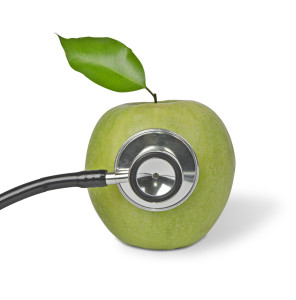** How can we “Know It When We See It” to divine when the FTC will label an all natural claim misleading? **
By: Brent E. Johnson
On April 12, 2016, the Federal Trade Commission (“FTC”) announced proposed settlements with four skin care, shampoo and sunscreen companies over the use of the term, “natural” in their product labeling and advertising (ShiKai, Rocky Mountain Sunscreen, EDEN BodyWorks, and Beyond Coastal products). The FTC issued an administrative complaint against a fifth skin care company making similar claims. The gravamen of each of these actions is the FTC’s assertion that the companies’ products “are not ‘all natural’ because they contain[ ] or contained at least one synthetic ingredient.” The FTC’s Director of the Bureau of Consumer Protection, in announcing the settlements, proclaimed, “’All natural’ or ‘100 percent natural’ means just that — no artificial ingredients or chemicals.” “Companies should take a lesson from these cases.”
But what exactly is that lesson? To answer that – lets recall the history of federal “natural” regulations (or more accurately, the lack thereof). The Food & Drug Administration (“FDA”) is the primary federal agency responsible for the labeling of food, drugs and cosmetics sold in the United States to, among other things, prevent consumer deception. 21 U.S.C. § 331(a). Three of the five companies sued by the FTC sell “drugs” (sunscreen). So what is the FDA’s position on “natural”? As we’ve blogged about before, the FDA has repeatedly demurred on the question asserting that “priority food public health and safety matters are largely occupying the limited resources that FDA has to address food matters.” Letter from Leslie Kux, Assistant Commissioner for Policy Food and Drug Administration, to Judges Gonzalez Rogers, White, and McNulty, January 6, 2014 (responding to the question of whether GMO seed used to grow corn rendered the corn unnatural). The FDA, from time to time, has relied on its 1991 “informal policy” of defining “natural” for food for human consumption “as meaning that nothing artificial or synthetic (including all color additives regardless of source) has been included in, or has been added to, a food that would not normally be expected to be in the food.” 56 Fed. Reg. 60421, 60466-60467 (Nov. 27, 1991). For example, in a November 16, 2011 Warning Letter to Alexia Foods, the FDA asserted that the company had misbranded its mushrooms and red potatoes as “All Natural” when they contained disodium dihydrogen pyrophosphate — a synthetic chemical preservative.
Very recently, as we’ve also posted about, the FDA has requested public comment on a possible definition of “natural” for food labeling signaling that the FDA may be ready to issue some sort of concrete “natural” rule in the near future, at least as the term applies to food. It will be interesting to see if things have changed since 1991, when the FDA, in assessing the possibility of consumer confusion, concluded that “natural” was already in “widespread use” “on a variety of products to mean a variety of things” with “consumers regard[ing] many uses of th[e] term as non-informative.” 56 Fed. Reg. 60421, 60466.
Unlike the FDA, the U.S. Department of Agriculture’s (“USDA”) rules on “natural” for meat and poultry appear quite definitive. According to the USDA’s Food Standards and Labeling Policy Book, “natural” means “(1) the product does not contain any artificial flavor or flavoring, coloring ingredient, or chemical preservative (as defined in 21 CFR 101.22), or any other artificial or synthetic ingredient; and (2) the product and its ingredients are not more than minimally processed.” Is this a “bright line” test? Not really. The USDA Policy Book states that “Relatively severe processes, e.g., solvent extraction, acid hydrolysis, and chemical bleaching would clearly be considered more than minimal processing.” Okay, so no “relatively severe processes.” But it also states. . . “the presence of an ingredient which has been more than minimally processed would not necessarily preclude the product from being promoted as natural . . . if it can be demonstrated that the use of such an ingredient would not significantly change the character of the product to the point that it could no longer be considered a natural product.” Oh.
In the end, the USDA relies on disclosure to alleviate consumer confusion. The Policy Book states: “All products claiming to be natural or a natural food should be accompanied by a brief statement which explains what is meant by the term natural, i.e., that the product is a natural food because it contains no artificial ingredients and is only minimally processed. This statement should appear directly beneath or beside all natural claims or, if elsewhere on the principal display panel; an asterisk should be used to tie the explanation to the claim.” Because the USDA’s Food Safety and Inspection Service must approve all meat and poultry product labels before they are placed on store shelves, any issues over the nuances of whether a product is “natural” are worked out on the front end.
Brief philosophical interlude: The USDA’s definition of “natural” has little or nothing to do with consumer health – a smoked meat (thought by some to expose consumers to carcinogens) is “natural” but a meat that undergoes relatively benign acid hydrolysis to round out flavor and break down proteins so they are more easily digested is unnatural. But if a consumer equates “natural” with “wholesome” (the FDA’s term) or “healthy,” does the USDA’s “natural” rule help consumers at all?
This brings us to the FTC – the agency with the longest history of not making rules on “natural” claims. “On December 17, 1982, the Commission decided to terminate its proposed trade regulation rule on food advertising. The proposed rule would have regulated energy and weight control claims, fatty acid and cholesterol claims, and natural food claims.” 48 Fed . Reg. 23270 (May 24, 1983) (emphasis added). This avoidance has continued unabated, up to and including the FTC’s revisions to the Green Guides governing environmental marketing claims. “The final Guides do not address organic, sustainable, and natural claims. . . . For . . . sustainable and natural claims, the Commission lacks sufficient evidence [presumably of what consumers think “natural” means] on which to base general guidance.” 16 CFR Part 260 (Oct. 6, 2010).
Of course, the FTC has long maintained that it has the right, on a case-by-case basis, to take enforcement actions against companies that use “natural” deceptively. 48 Fed . Reg. 23270 (May 24, 1983). But in the absence of an actual rule, the FTC is relying on the Potter Stewart pornography principle — “it know it when it sees it.” Jacobellis v. Ohio, 378 U.S. 184 (1964). That’s fine, but, under those circumstances, it is difficult for companies “to take a lesson” from the FTC’s five recent enforcement actions other than that the FTC doesn’t want to see chemicals in natural products.
But maybe that isn’t even true. The proposed settlements that the FTC announced on April 12th appear on the surface to be easy ones – the challenged products contain substances with chemical-sounding names like Dimethicone, Polyethylene, Butyloctyl salicylate, Neopentyl glycol Diethylhexanoate, Ethylhexyl glycerin, Phenoxyethanol, Polyquaternium-7 and/or Caprylyl glycol. The only public statement from one of the settling companies who sells sunscreen attributed its natural labeling to a mistaken belief that it could make the claim if the active ingredients were natural. But is important to observe that the FTC complaint against the single settlement hold out, California Naturel, is much narrower than the other complaints citing to only one “synthetic ingredient” – dimethicone – in a single product – Sunscreen SPF 30 – despite the fact that California Naturel (according to its beautifully designed website) sells a variety of skin care products that include numerous substances that have chemical-sounding names (e.g., Polyglyceryl-3 polyricinoleate – “an emulsifier made from glycerol and fatty acids”). California Naturel takes care on its website to explain when its ingredients are “extracted,” or “derived from” natural sources, but does the extraction or derivation processes render the ingredients “synthetic”? Apparently not.
So here we are – waiting for the FDA to maybe shed some light on what “natural” really means. But it is certainly understandable why the agency, as well as the FTC, have hitherto been reluctant to make a call on the issue. And whatever rule the FDA publishes, we must bear in mind its own admonition back in 1991 — “natural” “mean a variety of things” with “consumers regard[ing] many uses of th[e] term as non-informative.” Will the FDA’s pronouncement distill the essence of consumer understanding on the subject (if it even exists) or will it simply be a set of rules? If not the former, perhaps it’s better for the FTC and the FDA to continue to rely on the Potter Principle.


 Judge Lucy H. Koh gave all natural class defendants cause for celebration back in 2014 when she closed the door on a putative class representative’s claim that Dole’s fruit juices and fruit cups were wrongfully labelled as “All Natural.” Brazil v. Dole Packaged Foods, LLC, No. 12-CV-01831-LHK, 2014 WL 6901867 (N.D. Cal. Dec. 8, 2014). Last week, however, the Ninth Circuit re-opened that door slightly – at least enough for the plaintiffs’ bar to try to squeeze their feet in.
Judge Lucy H. Koh gave all natural class defendants cause for celebration back in 2014 when she closed the door on a putative class representative’s claim that Dole’s fruit juices and fruit cups were wrongfully labelled as “All Natural.” Brazil v. Dole Packaged Foods, LLC, No. 12-CV-01831-LHK, 2014 WL 6901867 (N.D. Cal. Dec. 8, 2014). Last week, however, the Ninth Circuit re-opened that door slightly – at least enough for the plaintiffs’ bar to try to squeeze their feet in. We have blogged in the past about some of the “usual suspects” in the consumer class action line-up – particularly for food, beverage, cosmetics and related industries – for example, the
We have blogged in the past about some of the “usual suspects” in the consumer class action line-up – particularly for food, beverage, cosmetics and related industries – for example, the 
